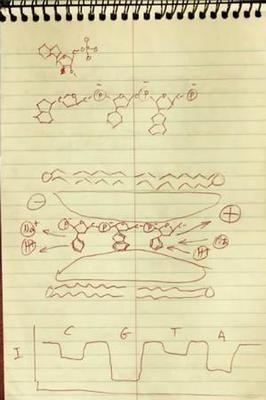Minion Dna Sequencer
According to some MIT Technology Review articles a company called Oxford Nanopore Technology disappointed many scientists and tech bloggers alike when it failed to ship its MinION DNA sequencer back in 2012.

The device is based on an idea Dr. David Deamer came up with over 25 years ago.
Finally, after reportedly overcoming many technical difficulties the company experienced before MinION’s last promised launch, it is now shipping its USB powered smart phone sized device!
It is only 60-80% accurate according to scientists beta-testing early versions of the product. However, the company is also promising a larger model, called PromethION, that will use up to 100,000 nanopores in parallel to sequence the same strand of DNA.
My guess is statistical methods and computer algorithms will be able to eliminate most of the errors by scaling the nanopore technology in the PromethION product.
This is of particular interest to me because in the late ‘90’s I became fascinated with the human genome project and had my own idea for how to directly read a strand of DNA much faster using electronics.
After my own flash of inspiration I became obsessed for about a week spending every second of free time I had learning everything I could about the state-of-the-art DNA sequencing machines & processes at the time.
I also researched a lot of science (biology, chemistry & physics) that that could support the evolution of my ideas into an implementation that would actually work.
I performed basic calculations to figure out how much memory it would take to store human DNA in computer memory and how fast a sequencing method would have to be to read and record all the information in days instead of the years being consumed by the human genome project.

My aim was to patent my ideas to sell them later, or at least write a masters thesis on one of them.
On one hand I was idealistic and naïve, but on the other I was actually developing skills and abilities that I would use daily as an electrical engineer and an entrepreneur later in life.
Ultimately, I gave up on my ideas after searching the internet and other patents and found a few people already working on similar ideas. I rested assured that the technology was only a couple years away from being perfected and was content that my efforts were good exercise for my brain and a great learning experience.
Now, almost 20 years later, I look at Dr. Deamer’s original sketch for his idea to sequence DNA using nanopores and it reminds me of dozens of long gone sketches and notes of mine made on quad-ruled notebook paper.
It has taken so long to get to this point that some researchers are publishing studies that question the benefits of sequencing a patient’s entire genome.
It’s pretty obvious that any technology similar to the MinION DNA sequencer has tons of potential though.